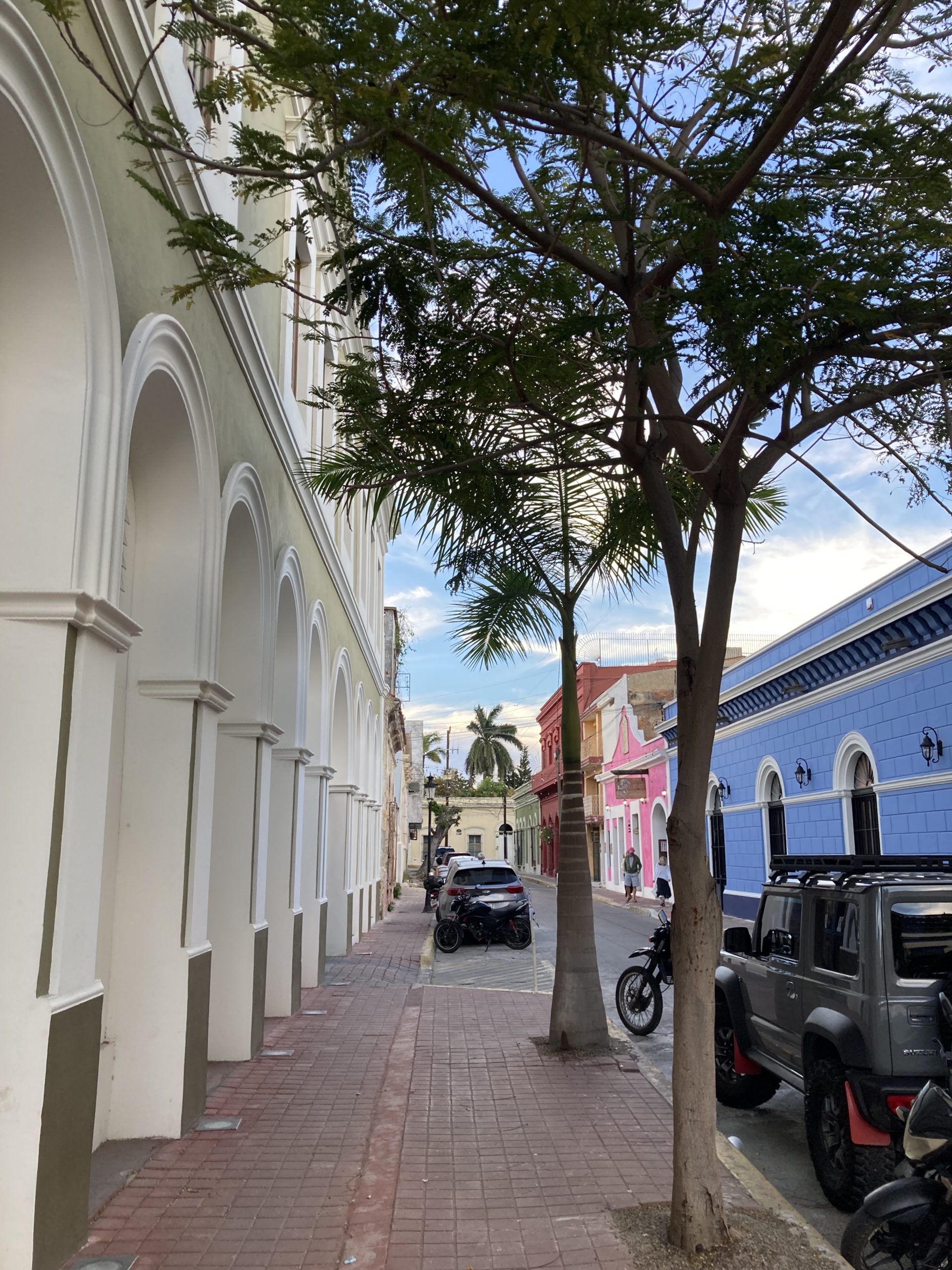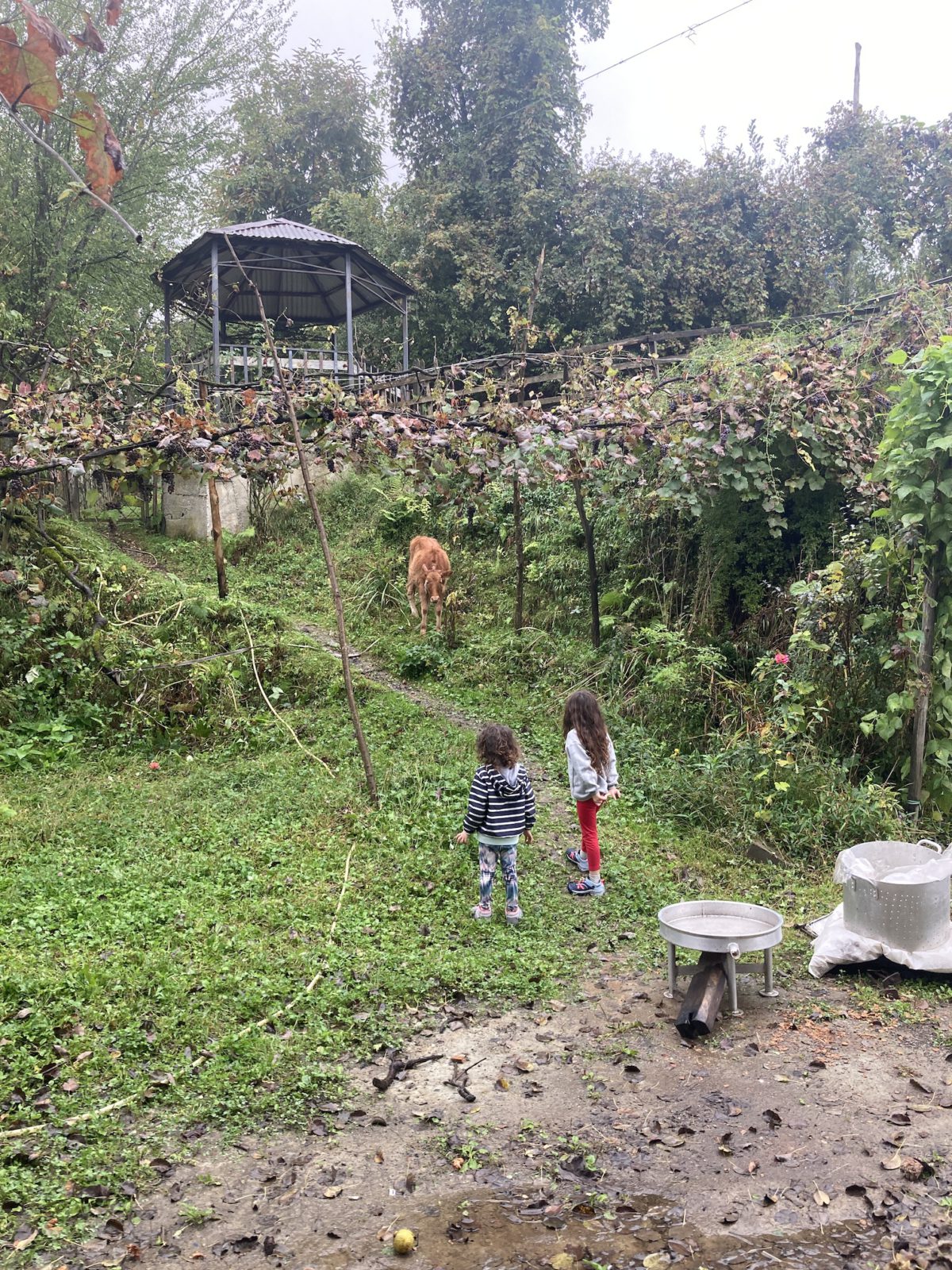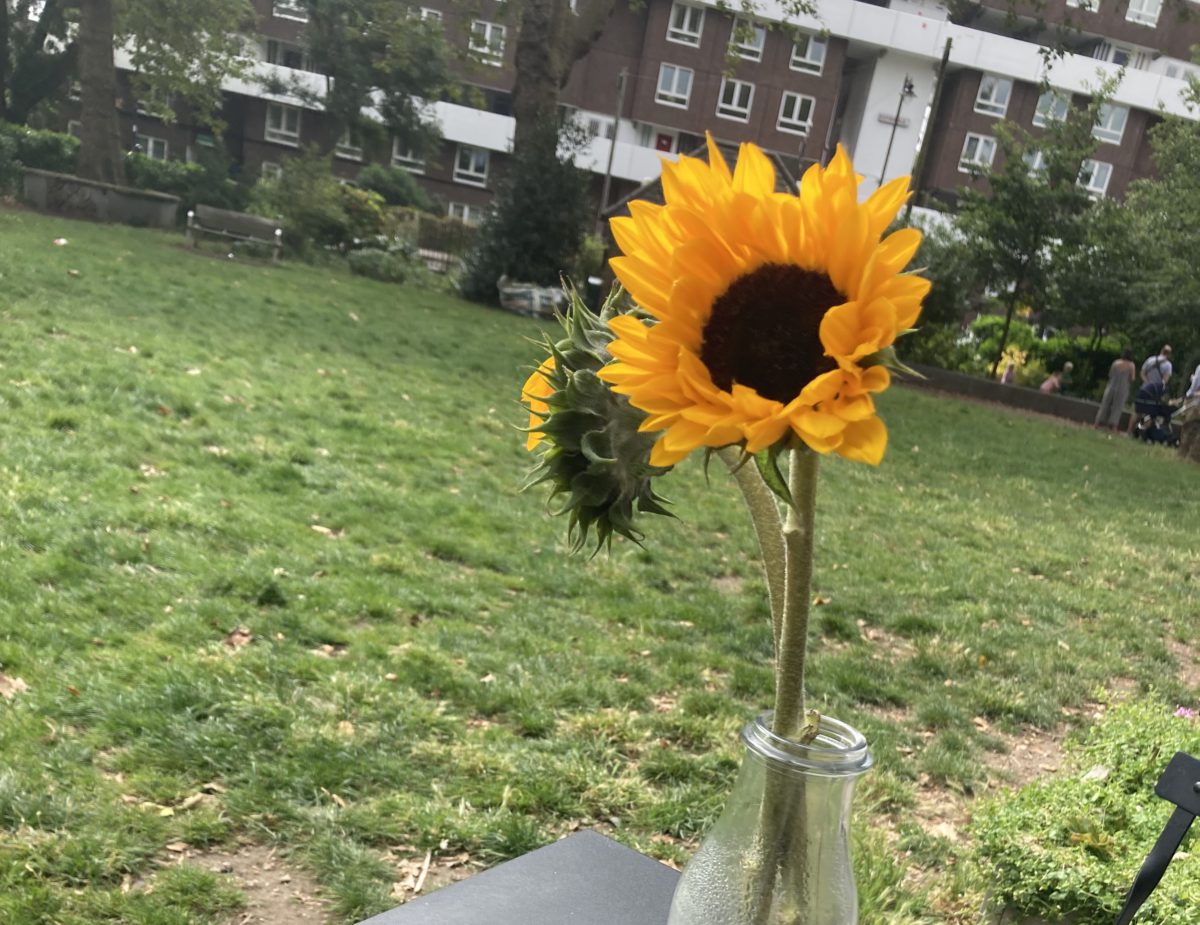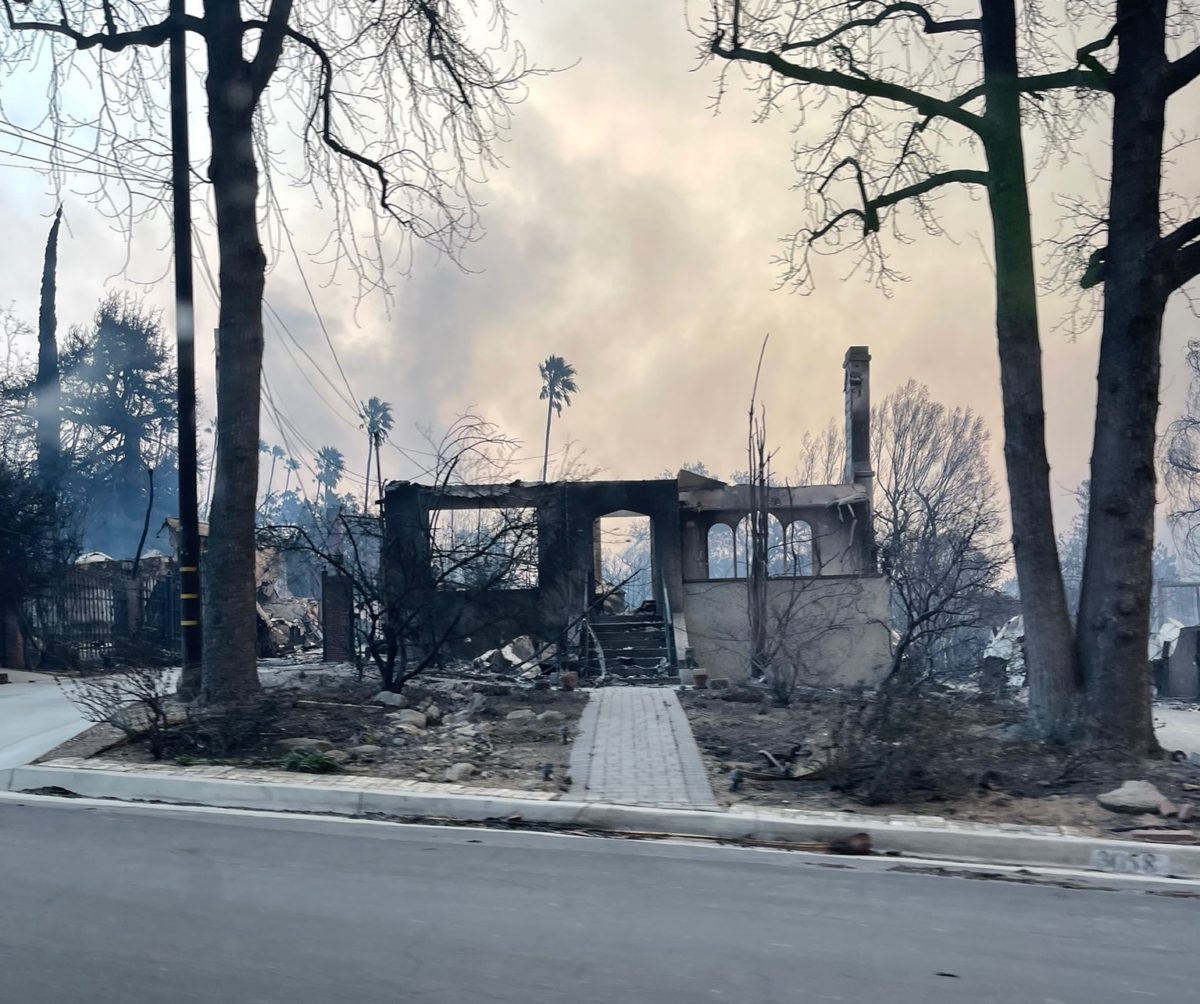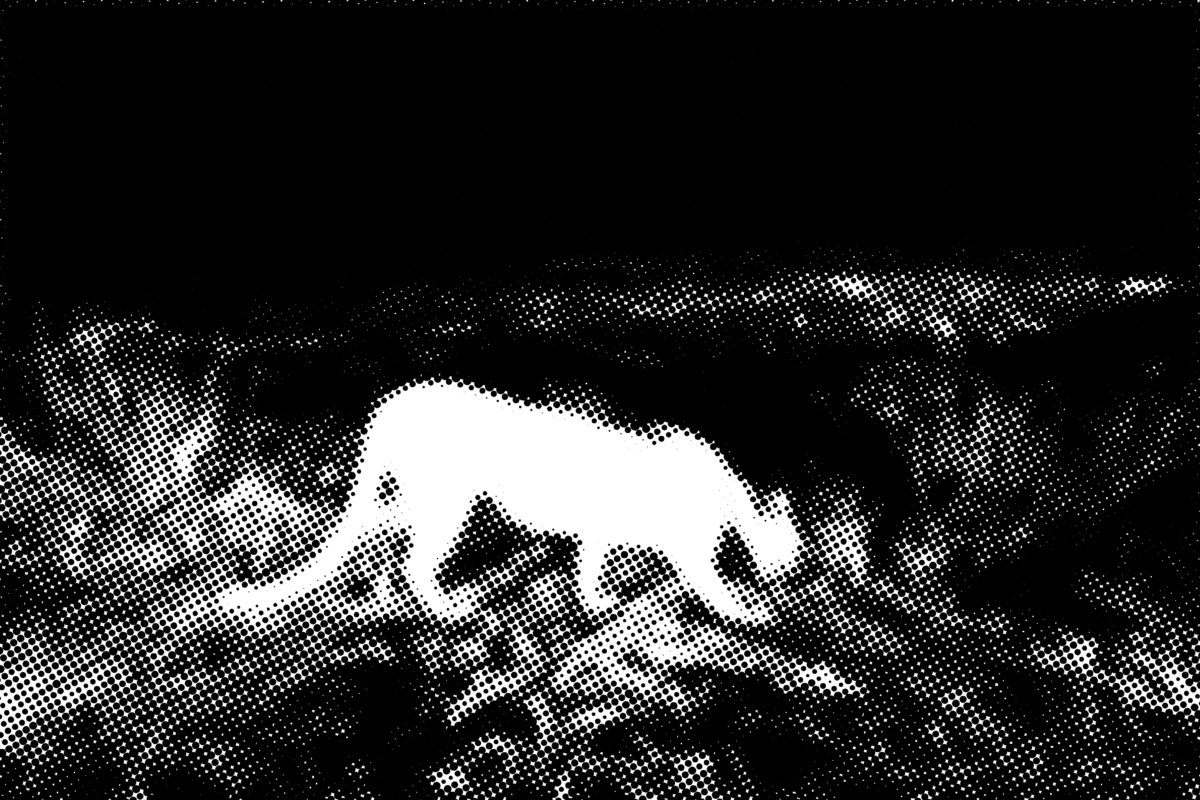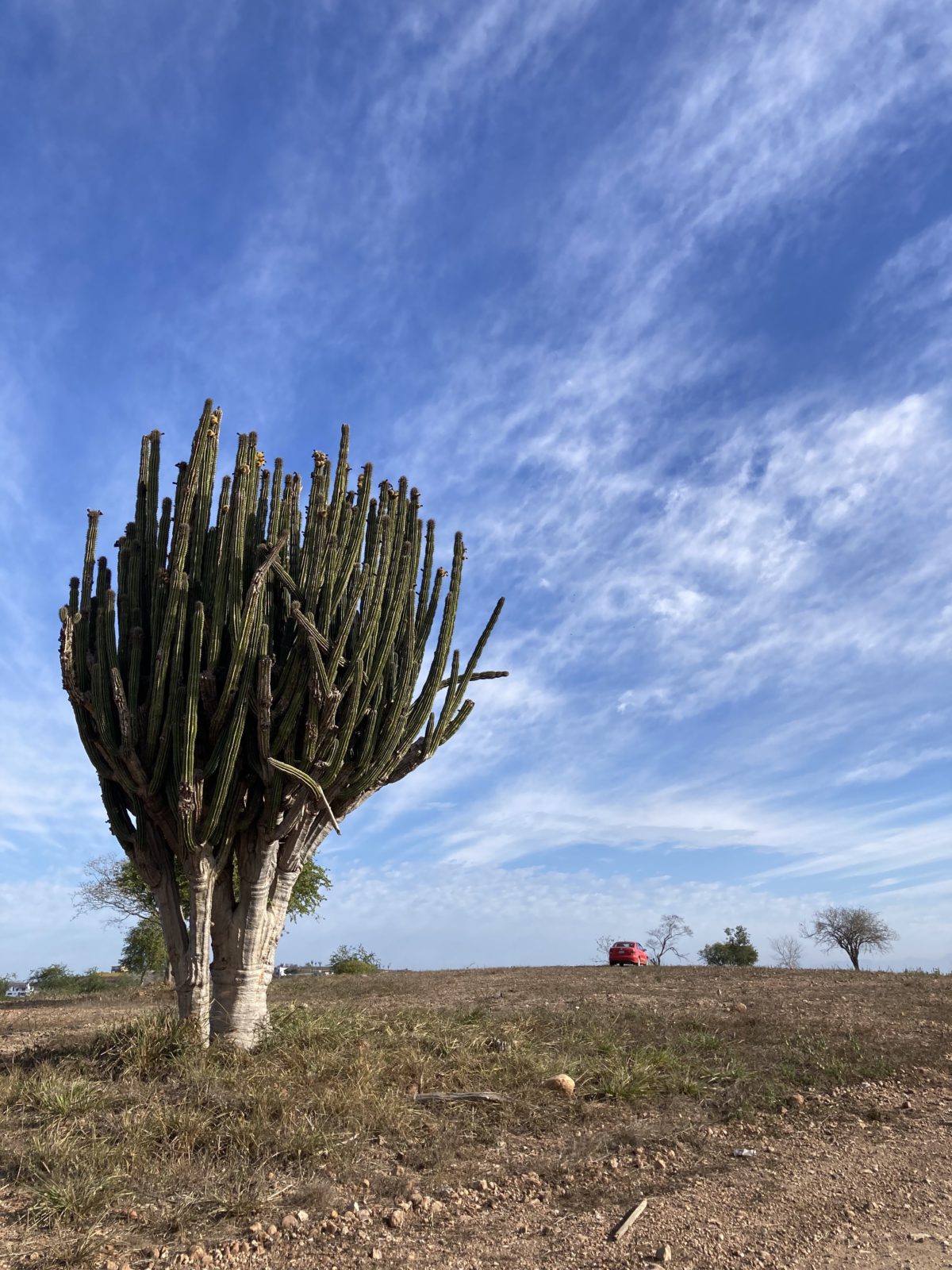
And O the holy sea of Mazatlán and the great red plain of eve… the exact concentric center of the circle of the red universe.
—Jack Kerouac, “Mexico Fellaheen”
BETWEEN THE FOURTH AND ELEVENTH OF APRIL 2024, I traveled to primordial Mazatlán, Mexico with my wife and in-laws to view the total solar eclipse. The following is a selection of my notes and journal entries.
Day One (Thursday, 4.4)

“One says Mexico, one means, after all, one little town away South in the Republic…”
— D.H. Lawrence, Mornings in Mexico
The light outside the Alamo Rental Car is pellucid, a starkness that bathes us and all the dust-spattered cars around us. There’s a haphazard quality to this alleyway of rental joints and structures that reminds me of a cross between a construction site (there are high-visibility vest-wearing workers walking out from behind tall gates) and the industrial stretch of Oxnard Street in Van Nuys. It’s thrown together but it works.
We’re outside because our rental car reservation for a Mitsubishi SUV was given away, the process of pre-booking meaning very little in small cities flooded by travelers in anticipation of an event one could call “biblical.” After some time in the sun while F. haggled in the office, our substitute chariot arrived: a small, red, dusty Volkswagen Vento (like a Jetta only smaller) with a missing hubcap and a license plate just that bit askew. We tetris our bags into the trunk, all five cram in, and off we zoom, the little 100-horsepower 1.6 liter inline-four wailing at 3500 rpm as I merge onto the highway where everyone seems to be doubling the modest speed limit marked 80 km/h.
The colors out here evoke both the sea and the desert; the landscape is at once rugged and relaxed—the sound of crunching gravel and waves breaking. We are on the edge of a large land mass and yet feel somewhat like we are on an island. We head to the beach in the towering presence of the RIU hotel (five stars according to Google Maps, looking like a Mormon temple mated with the Excalibur Hotel & Casino Las Vegas to birth a replica of Havana’s Hotel Nacional) after a meal at a little palapa-inspired cantina called El Tequilita that caters to the resort crowd with tall, powerful margaritas and regional specialities. Ceviche. Shrimp tacos. Guacamole, pico de gallo, a fire-roasted spicy Sinaloan salsa. After the frenzy of arrival, this first round of drinks with the sun descending over the beach—a cool breeze riding in like a wave—reminds us that this is exactly why we are here.
Our little rented abode is within a housing development called Azul Marino, Pleasantville-style (“Little boxes made of ticky tacky… little boxes all the same”) but beachy, with a pleasing juxtaposition of sky blue, marine blue, palm tree green, and white walls that each heighten the other’s vibrance, and all with a speckling of fine brown dust that blows in from the environs. Three pools with tilework in varying states of soundness dot the property. Every little lane follows the theme: Mar de Cortez, Mar de Caribe, Mar de Baltico, Mar de Bering, etc. Developments like these appear to be popping up on these dusty rolling hills of Sinaloa like it’s boom-country—cranes, construction workers, and scaffolding everywhere—and if Azul Marino is anything to go by, the pace may be considerably outperforming the craftsmanship.
Day Two (Friday, 4.5)
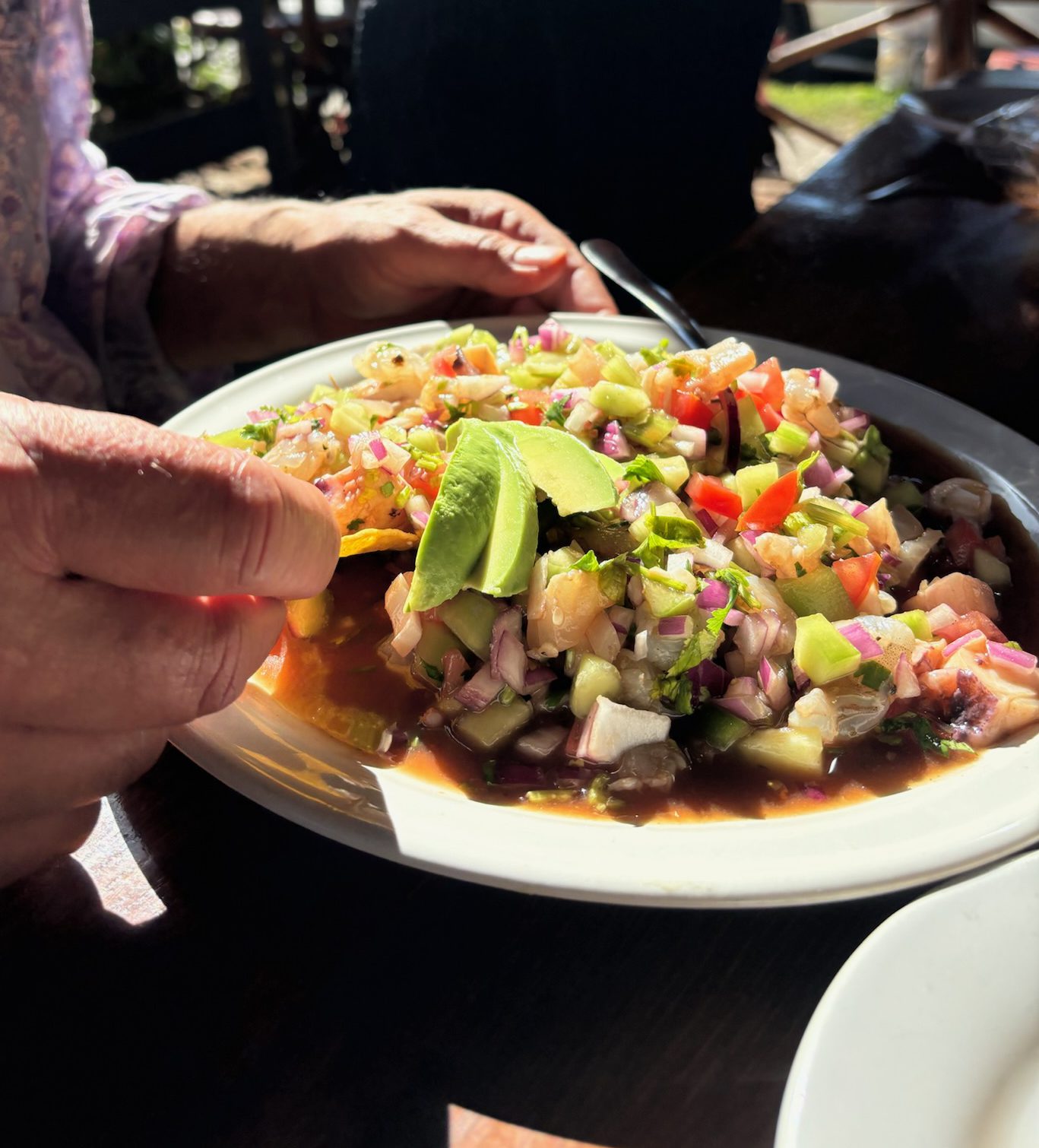
Work. Pool. Airport. Having picked up my mother-in-law’s sister, there are now six of us in the small Vento. Lunch. Beach. Cadillac margaritas to-go in super-sized cups. The white caps of breaking waves are pink, the water silvery blue; the sky burns with the setting sun. Drums beat in the distance and the last of the afternoon’s hawkers stroll back and forth carrying their hats, sunglasses, canteens, balloons, bandanas, blankets, and more in the cool but not yet chilly air, another long day fading behind them; they are bilingual at the very least.
For lunch, we’d eaten at a nondescript farm just off highway 503, El Ranchito Feliz. Chickens, a puppy nipping at our ankles with her razor sharp teeth, no running water in the washclosets, marvelous food: homemade blue corn tortillas, ranchera and mojo de ajo shrimp, horchata in unlabeled plastic bottles. Then, satiated with gratitude and politesse, we fail to come up with enough pesos in cash. I race back to the casa, gunning the Vento—its little motor wailing at 4000 rpms—and bring back a 500 peso note.
Day Three (Saturday, 4.6)

“In Mazatlán… the houses are pink and turquoise. The windows are always either shuttered or protected by grilles. There was a boa constrictor on the road, dead, being eaten by vultures. In the hotel the water closet was inside the shower. On the road a cow skeleton was propped against a tree… Cool, trellised shade created by bamboo and palm leaves. A crib hanging from a ceiling… Oxcarts give biblical flavor to the fields, the white Brahma bulls. Some chariot wheels askew, as if drawn by a child… the tombstones were painted in joyous greens and pinks. The plastic flowers were in pastel colors. Their dream suffices them.”
— Anaïs Nin, Diaries Vol. V
Morning in Mazatlán. Warmth in the air, the sky is blue, streaks and fine wisps of delicate cloudcover pass along in ever-increasing frequency. Overcast conditions are expected for the next three days, including eclipse day. But we are still enthusiastic.
I am eager to begin rescuing all I’ve witnessed from the threat of forgetting. To write all my impressions of Mexico’s topography and coastal terrain from the air as we flew in, the stretch of Baja California Sur absolutely uninhabited for what seemed hundreds of miles, including coasts and small, jagged islands of rock that protrude from the still sea, not a soul in sight.
We drive to Copala, a silver mining town that dates back to 1565 in the municipality of Concordia, 610 meters up into the Sierra Madres. We get lost a couple times due to discrepancies between the “smart” phone’s directions and veritable, extant roads. (We also pay over 300 pesos in various tolls.) We pass elaborate, decorous mountain cemeteries festooned with plastic flowers and multi-colored gravemarkers. In Copala, only the sounds of roosters, birds, people’s voices in backyards, a distant cowbell. Stillness and heat, bougainvillea, cacti, palms. San José de Copala, the stone church at the head of the plaza, was built around 1765 by the Marquis of Panúco, Francisco Javier Vizcarra Moreno. The Spanish crown supplied 200 pounds of gold to adorn various facets of the edifice. Scant evidence remains.
There is a man with a paunch in a dark polo shirt and jeans who tells some of these facts to the tourists wandering the church and its cobblestone perimeter. There are two or three separate groups, less than ten people in all, excluding our party of six that has dispersed about the area. Outside, he points to a disfigured knob in the weathered wall of the church and says it’s the face of the devil, that children would run around and throw stones at the face as a sort of game. A rooster crows.
We have lunch in the restaurant at the other end of the plaza. It is charming, partly indoors, partly outdoors, and all very much reminiscent of a nineteenth-century cantina in some western; whether or not this is evidence of my adulterated imagination, there’s little I can do about it. I love Mexico, yes, but perhaps unapologetically I love Sam Peckinpah the more for it. The menu is simple: two or three variations of grilled shrimp (ranchera or mojo de ajo), an arrachera (skirt) steak, ceviches, fajitas. L. and D. order margaritas; A. and P. split a Tecate light; I drink the same, the only beer available. One of the servers, all very friendly, is the younger, spitting image of the man at the church. Afterwards, he points us in the direction of a shop he says sells handmade leather goods and art. We browse around and there he is again to process my transactions—a wallet for my father and a belt for myself, both redolent of fine Mexican leather. He is courteous and also proprietary, they all are—they’re home.
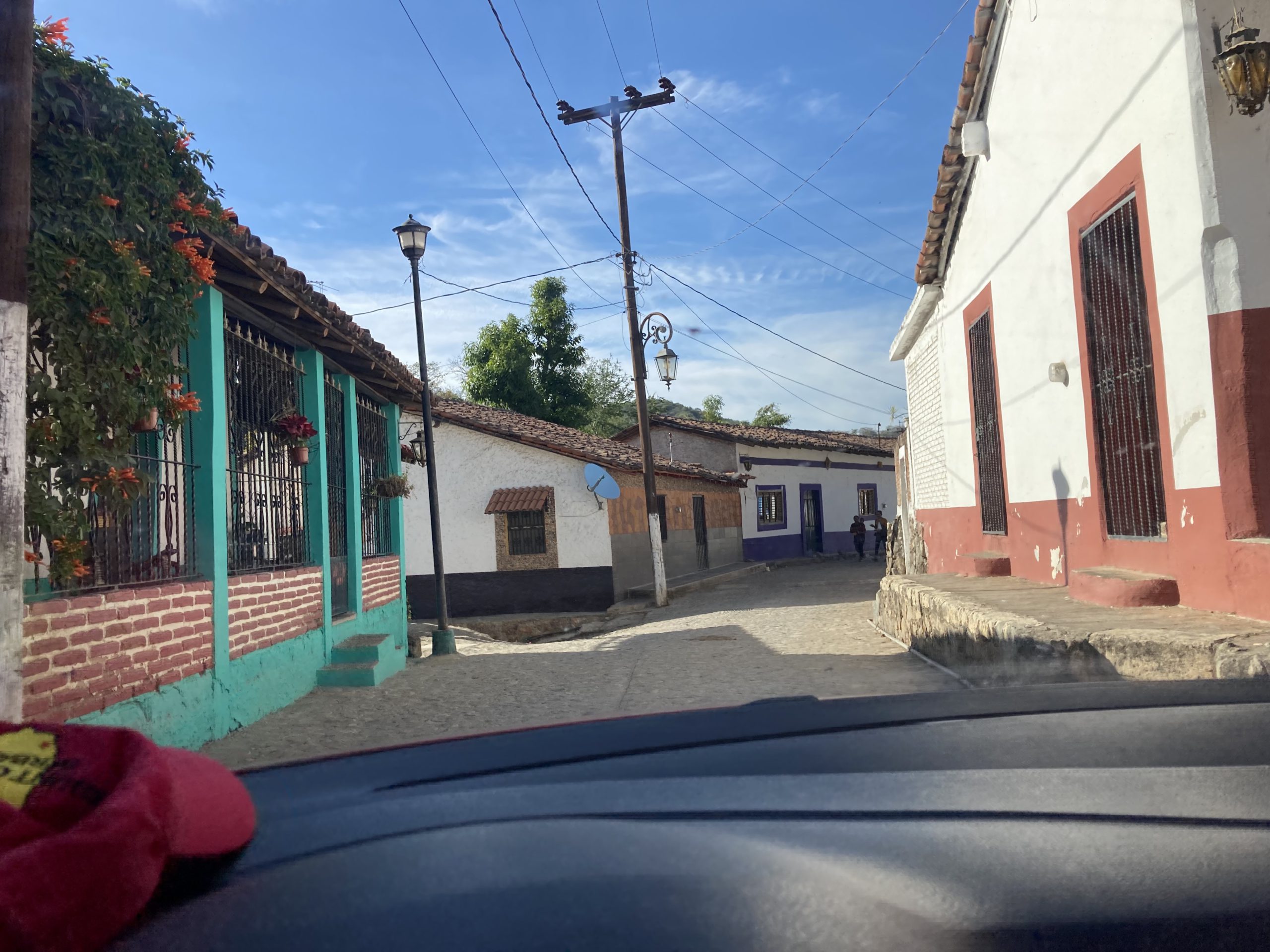
Evening. Our first taste of Mazatlán proper: El Centro, with its historic core, international restaurants, price markups, and mickey mousing of Sinaloan culture for the tourists to enjoy at their tables where they sip $12 (USD) glasses of wine. At the Plazuela Machado, you hear a spattering of languages amid the hum and buzz of the hundreds moving, hovering over the music and the vendors. Most distinctive—and probably most common—is English. Yanquis—retired and in their prime alike—yanquis everywhere, smiling, laughing, fawning over the exotic pleasures to be found south of the border, their skin spotty, teeth veneered, eyes squinted or set back. I don’t think I’m incorrect in thinking of George Grosz.
The architecture is distinctly neoclassical, French and Spanish colonial with those tropical flourishes that make it kin with Havana and New Orleans. Elaborate grillework and tall, open windows like carriage house doors. In lieu of a muted pastel palette, however, vibrance prevails: rich magentas, teals, seafoams and more which strike you whether they are peeling from the walls or not. Turns out, Mazatlán is a Nahuatl word for “place of deer” (though we spot not one). The city was already home to many indigenous cultures when it was colonized in 1531 by Spain. Over time, Mazatlán developed into a commercial seaport, importing equipment for the gold and silver mines in the mountains nearby. It served as the capital of Sinaloa from 1859 to 1873. Bavarian settlers (who had been emigrating—or exiling themselves?—throughout the 19th century) established the renowned Pacífico Brewery in 1900.
Along the Malecón, the scene shifts more toward the locals, although, once again, tourists abound. The Malecón is a familiar sight for Central and South Americans and Caribbean islanders alike, any of whom have lived or visited their coastal cities; that great meandering promenade atop a sea wall where leisure, flirtation, and mischief reign as the waves break along the stony shore and the sun sets in smoldering fuschia into the dark sea. As night envelopes the city, frenzy swishes back and forth and spills over the streets like a Solo cup at Carnaval, bass thumping from point to point. Saturday night, eclipse weekend.
At one point, an endless queue of bikers in their cuts—the motors of their elaborate cruisers roaring, the men with their women mounted behind them—stops in the middle of the sole northbound lane. Their patch reads Los Centauros: El Paso (or, one hell of a ride). With traffic stopped up in a streak behind them, they slowly begin the process of parking—one painstaking cruiser at a time. It is apparent they will be taking over La G Del Gato, a three-story eatery built into the cliffs of los Balcones de Loma Linda above, emblazoned with huge bright lights that shout: “PIZZA CEVICHE BURGERS,” a natural combination. People walking by stop to ogle and take photos, many of the female Centauros pose and take selfies, and while the horns blare the still-running motorcycle engines roar even louder while off-key karaoke bellows from a bar two buildings down and it all blends into a cacophony of such impressive magnitude I am momentarily swept up and lost as in a fever dream.
We turn back into the small cobblestone streets and wander aimlessly looking for an appealing bar or eatery that doesn’t feel like a Mexican interpretation of the generic trendy cuisine our country has whipped up and pervasively propagated with the skill of a Jehovah’s Witness: mixology, fusion, and jargon. White guys with man buns sip from their frosty glasses outside a mezcalería next door to a self-serious izakaya joint. Along the way I stop to admire the legions of abandoned, crumbling beauties, some with their roofs caved in and the flora growing wild, others seemingly frozen in suspended renovation. Outside of another impressive, darkened building I read a plaque that commemorates Herman Melville’s stay from 28 March to 16 April 1844 and suddenly I feel better: “As for me, I am tormented with an everlasting itch for things remote. I love to sail forbidden seas, and land on barbarous coasts.” Was he, too, surrounded by so much boisterousness? Whatever happened, the trip marked the end of Melville’s wandering years at sea and, back in New York, he would begin to write in earnest.
Back in the car for the drive back after a tasty if overpriced meal in a brick courtyard off Avenida Cinco de Mayo, we pull into the electric night, the streets jam-packed with so many vehicles, so many cabs, so many parties of people looking to cross to and from the neutral grounds, current-like swirls of cars and motorbikes at every roundabout, like schools of fish in the cold, blue depths. I know Mazatlán is a tourist destination. Unlike its confrère, Cancún, in the eastern state of Quintana Roo, Mazatlán—with its aesthetic beauty, active port, and mining interests—is more comparable to San Francisco, whether the Twin Peaks-meets-Coit Tower-esque Balcones de Loma Linda are taken into account or not. But today so much of this human profligacy is actually gathered here for something majestic and wholly beyond the confines of our terrible human smallness, that as the high priests once marked the celestial calendar with fiestas, here we were again, one gigantic swirling multi-day fiesta in anticipation of something celestial, extraterrestrial. Bodies in furious motion were here awaiting four minutes in the near future in which we yearned to be overcome, rapt in attention, heads upturned to the infinite.
Day Four (Sunday, 4.7)
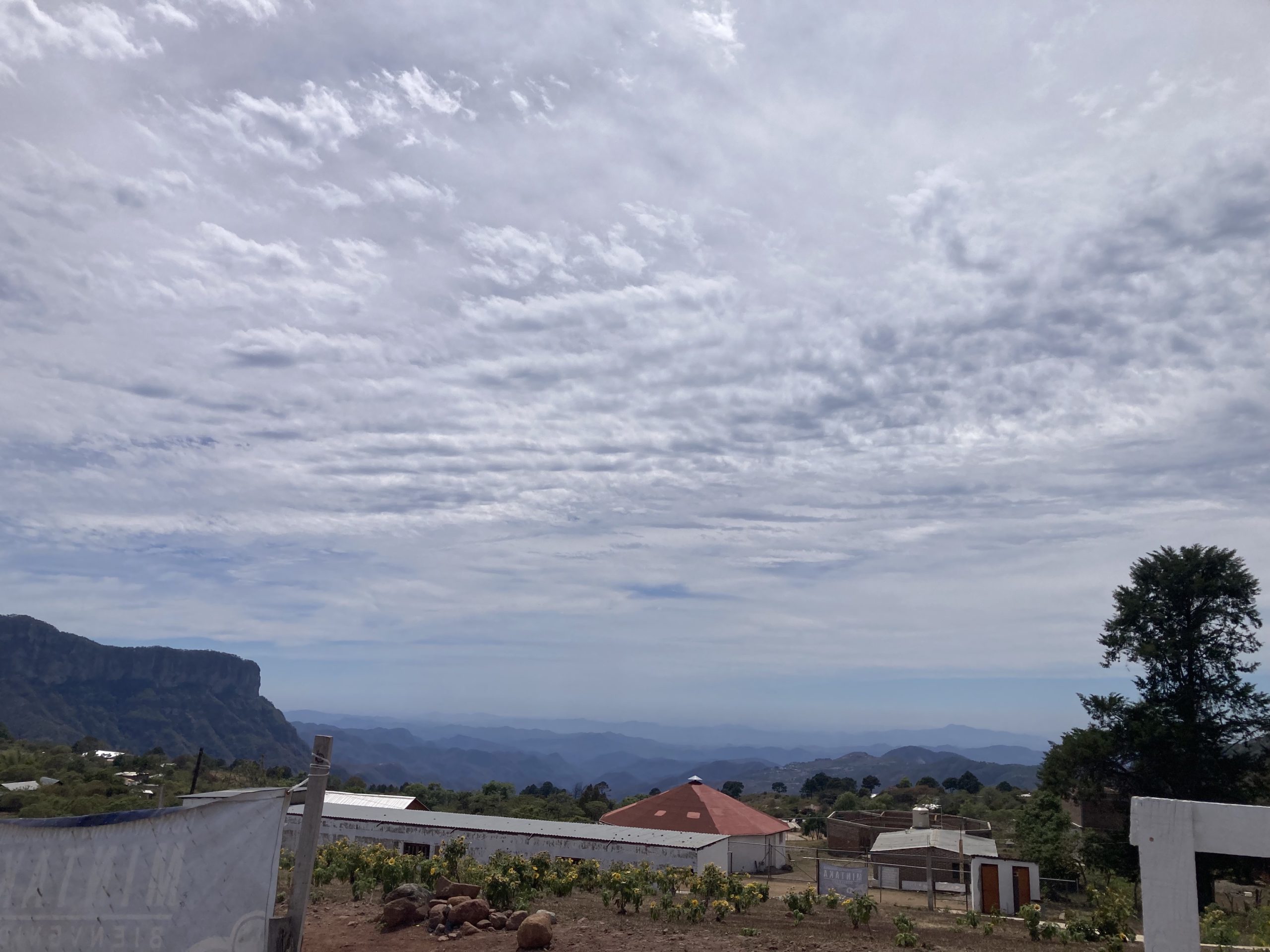
“He was mad to look over our horizons. Anywhere, anywhere out of our world. To get away.… To cross a horizon into another life. No matter what life, so long as it is another life.”
— D.H. Lawrence on Herman Melville, Studies in Classic American Literature
More recon for an eclipse viewing spot. Each morning a rush of sounds from the birds, varieties of noises and calls foreign and unknown, polychromatic sounds resounding layer upon layer, foreground, middle, and back. Wind chimes and little knockings before the sounds of voices, then a baby somewhere, too. At eight in the morning the sky is blue and bright, with more delicate streaks of white than yesterday, even some patches, something like an expressionist gouache on the firmament. I track this because again the weather report reads “overcast.” When overcast in California, the brightness of sunny days is replaced with a pall of such dreary weight, heavy gray caps our world end to end without a flicker or spot of blue in sight like a reprimand, depression and languor a certainty. But this, this we’ll take.
Two people lighter (L. and D. opting to hang poolside), we drive back up along Highway 40, this time without any mistakes, only higher and higher into the Sierra Madre Occidental, past yesterday’s familiar sights (shrines, villages, cemeteries) and into tighter and tighter switchbacks and hairpins, by shuttered or abandoned cantinas and restaurants built into the rockface. We snake off the main route at Potrerillos and climb a little until we reach a plateau, lush and loamy, surrounded by mountains, one directly ahead capped by a boulder that looks like a jagged molar.
We are in the town of Chirimoyos, 65 kilometers east and 1.6 km above sea level, i.e. Mazatlán. It is a town of no more than 200 people, and with a typical array of beautiful mangy stray dogs, mutts all of them with such variegated coats and eye colors and ears, and also a variety of livestock—burros, horses, even mountain goats. Each resident is self-sustaining, consuming what they produce: honey, coffee, eggs, corn, even gum. We stand at the deck at the Observatorio, behind the tiny “Academia par la Ciencia Futuro,” its letters all but worn away by the wind, with a banner welcoming all for the “Eclipse Petaca-Chirimoyos 2024.” We admire a spectacular panorama of mountains upon mountains upon mountains, foreground, middleground, background in subtle shades of brown and darkened mauve. Silence between breezes, and from down a hill behind us, we begin to hear sounds like a drum circle resonating with the wind, likely coming from the collection of tents we saw by the school. We know we have found the spot for the eclipse, but we bid it a bittersweet farewell, for the road is too treacherous for a Vento packed with six people.
We drive up to photograph the sign demarcating the Tropic of Cancer and back down to eat at a charcoal grill set in front of a small convenience window that sells snacks and sodas in the shadow of a tall overpass (Federal Highway 40D). The area is not unlike Big Sur, once you pass Deetjen’s on the run up to Loma Vista. A tanned man with prominent cheekbones and sunglasses turns smoking steak over the coals. Steak, sold by the kilo or half kilo. We have a friendly conversation with the proprietor, a young geologist who works for a Canadian company digging silver mines in the area. He is from Concordia, about a thousand meters closer to earth, and speaks English well. “These mines will be good for all the people here, for these villages. More jobs, more money.” He sells here weekends because, as he put it simply, there’s no cattle up in these mountains, and no cattle means no steak. His girlfriend calculates the prices, his friend (who doesn’t say a single word the whole time we’re there) cooks the steak. The handmade tortillas are delectable and we smear them with creamy, spicy refried beans, piles of steak strips, jalapeño and onion off the grill, and another of those fire-roasted salsas. We buy another kilo of meat to take home.
That evening, with 12 hours until the eclipse, F. obsesses over the weather reports. Recon has failed to produce a viable option, if not a stunning one. We spend the evening crunching alternatives. We settle on a small town called San Francisquito for the familiarity of its name and the presence of a small plaza with a view of the sky unobscured by tall trees or buildings.
Day Five (Monday, 4.8)
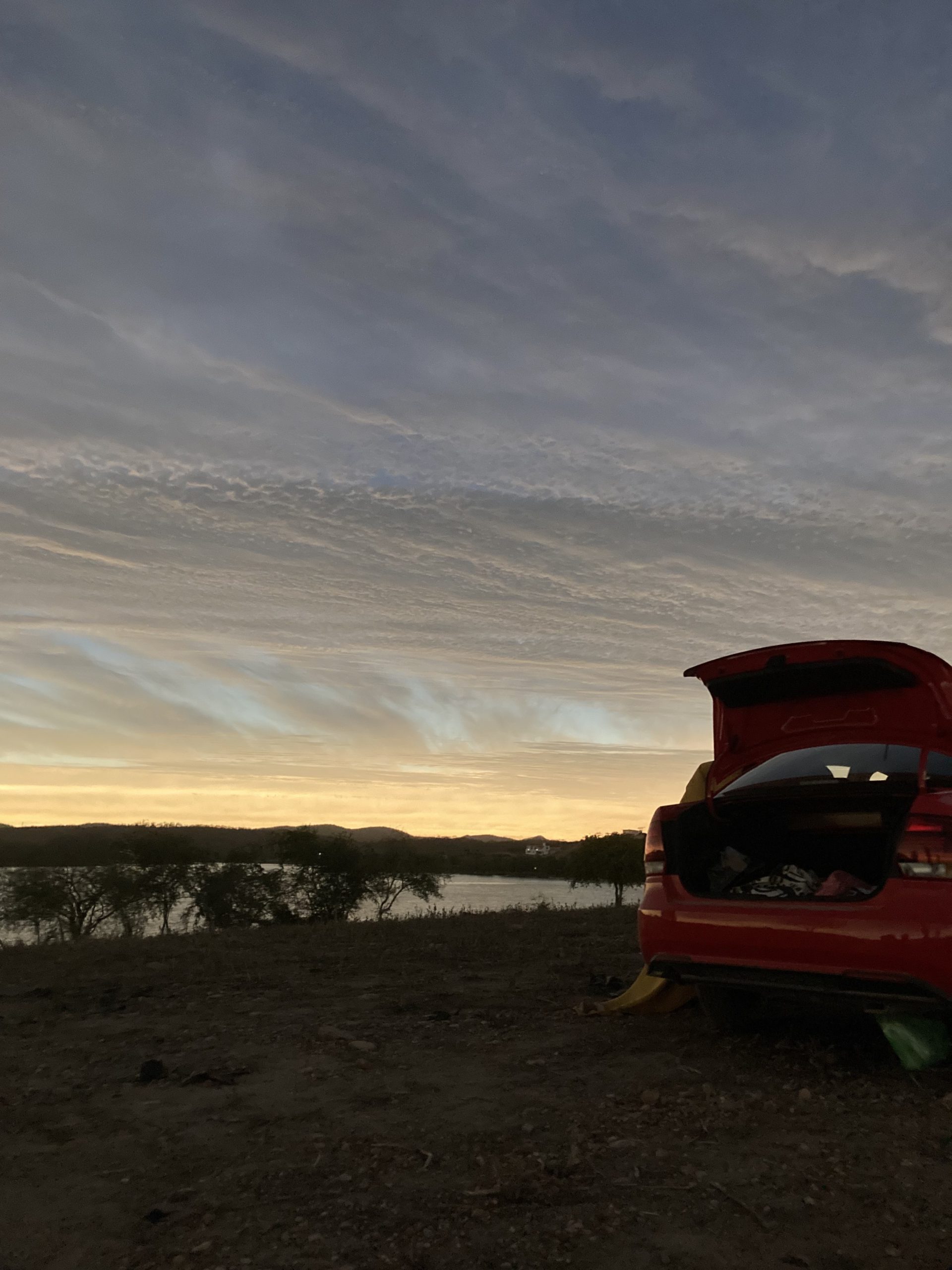
“I get a vision of myself… hung up in a great endless universe with nothing overhead and nothing under but the Infinite Nothingness, the Enormousness of it, the dead without number in all directions of existence whether inward into the atom-worlds of your own body or outward to the universe which may only be one atom in an infinity of atom-worlds and each atom world only a figure of speech—inward, outward, up and down, nothing but emptiness and divine majesty and silence…”
— Jack Kerouac, Lonesome Traveler
Eclipse morning. Up before dawn. Out for 6:00 am, east we drive to San Francisquito. The morning hustle on the highways begins regardless, less evidence of eclipse chasers and more of the Monday morning grind. We have the luxury to choose, but all said and done we all will stare up at the sky. Just outside of the town we come across a lake lined by lush greenery: mixed grasses, palm, mango, and date trees, bougainvillea, the vibrant sounds of so much life—land and aquatic birds, frogs, insects, and reptiles scuttling or lounging about in silence. Rolling hills surround us with the Sierra Madres of yesterday to the east, in the direction of Durango. We settle atop a mound between the dirt roads that crisscross the area, home to cabins and rental properties in the distance, with a clear view of the lake and the wide open sky. The gang wants breakfast and I volunteer to hang back with a beach chair and a book to protect our spot.
(Captain’s Log:)
9:48.20. The moon is nowhere to be seen. Patches of very shallow clouds move along slowly in front of the sun but in general the sky is terrifically blue and relatively clear. Another group of people, young travelers, arrive and take a shaded spot by the small rectangular foundation of concrete about a football field away from where I sat earlier to write.
The red VW is still missing. I’m glad I stayed behind to track the birds and to dissuade any comers. I must make for a wild sight: Out in the middle of a patch of land, unshaded, a man with long wild hair and beard and spectacles in a light linen suit with a pocket paperback and notebook paces beside a tiny beach chair, checking his watch. I find the absence of any moon anywhere to be curious…
In the distance to the southwest, excavators make a terrific ruckus at a pit, like tanks on recon around a small perimeter.
9:58.xx. The VW has returned and D., donning her eclipse glasses, immediately spots the small bite the moon has taken out of the sun. Stage One.
10:10.31. F. declares the passage of the moon across the sun one-quarter through.
10:29.45. Looks like halfway. The day is slightly less bright, something like a movie filter, a sort of paleness although nothing conspicuous. The birds are as loud as before. D. & A. have already gone through one a cappella rendition of “Total Eclipse of the Heart.”
10:41.00. Sun looks like a cashew. Pit has gone quiet. Apart from a steady chirp of birds, the steady hum of the freeway in the distance. The pungent smell of manure from earlier has drifted away. Pale blue. It is all new.
10:51.31. Cold feet. A. googles to confirm last minute we can, in fact, look at the totality without glasses.
10:58.07. Sun has become a tiny crescent, like a “clipped toenail,” D. says. Focusing hard enough on the moon I can almost make out its curvature as the last of the sun’s light wraps around it. There is a steady chorus now. I believe it is frogs.
11:03.xx. Rapt attention. The wind is constant. Distant voices.
11:05.35. Only seconds of light could possibly remain. The earth is (illegible)… Stage Two.
11:07.xx. Final stray calls from a few birds, sounds like confusion. Humans in the far distance hooting and howling. The horizon glows, smolders, all around us like dusk.

Totality. Corona. A hypnotic, ethereal glow. It is substantially cooler. Applause. We hear the frogs. I fear I feel tears welling up. Chesed (mercy, loving kindness) and Binah (knowledge, understanding, insight), at once.
11:12.04. Brightness returning. A. plays “Here Comes the Sun” from her phone. I felt overcome in those final moments of darkness by the profundity of this whole arrangement. Of rock and gas and charged particles all aligned at that moment “in accordance with the laws of beauty.”
11:19.20. The irredeemable, infallible march of time into the void. That moment—interminable second by second when we (separated by decades) were rapt with wonder as children—now gone forever like a trillion particles of dust. The frogs, the frogs are going strong.
11:42.xx. All clouded over. “We made it.” “You had to have faith,” says P. about the weather conditions, “and we had faith.” It is overcast all the way to the Pacific.
12:03.xx. Not unlike Pac-Man. Temperature has increased. All returning to normalcy. The final chunk en route to fourth contact. I don’t hear the frogs as much.
12:30.30. Packing up. We call it a total eclipse.
The second half always goes quicker than the first. We head to the beach but stop to eat at Tequilita first. They were slammed all day, our server says, not a moment’s break. Her morning coffee is still around somewhere, untouched. And the hordes were impatient, apparently. So much for wonder to humble us. It’s chilly and we drink margaritas. Then we go down to the beach. F. and D. boogie board. I look up and down the shore, at the tall resort towers to the north, the rocky promontory to the south. People sit, children play, the waves roar—swell, break, beat the shore, and pull away. Nothing has really changed yet I want it to, I want something to have been irrevocably marked. But it leaves no traces.
The last total solar eclipse to hit Mexico was July 11, 1991. The zone of totality passed through Mexico City, lasting over six minutes. In Baja California, the temperature dropped from 13 degrees celsius to six degrees celsius in minutes. In other areas temperatures dropped below zero. Fear of losing sight, prenatal deformities, and strange animal behavior gripped many despite the endless explanations and precautions offered by the authorities and the media. There were no smartphones. The Zocalo went dark, the corona visible through a belltower. It was known as “the Great Mexican Eclipse.”
Day Six (Tuesday, 4.9)
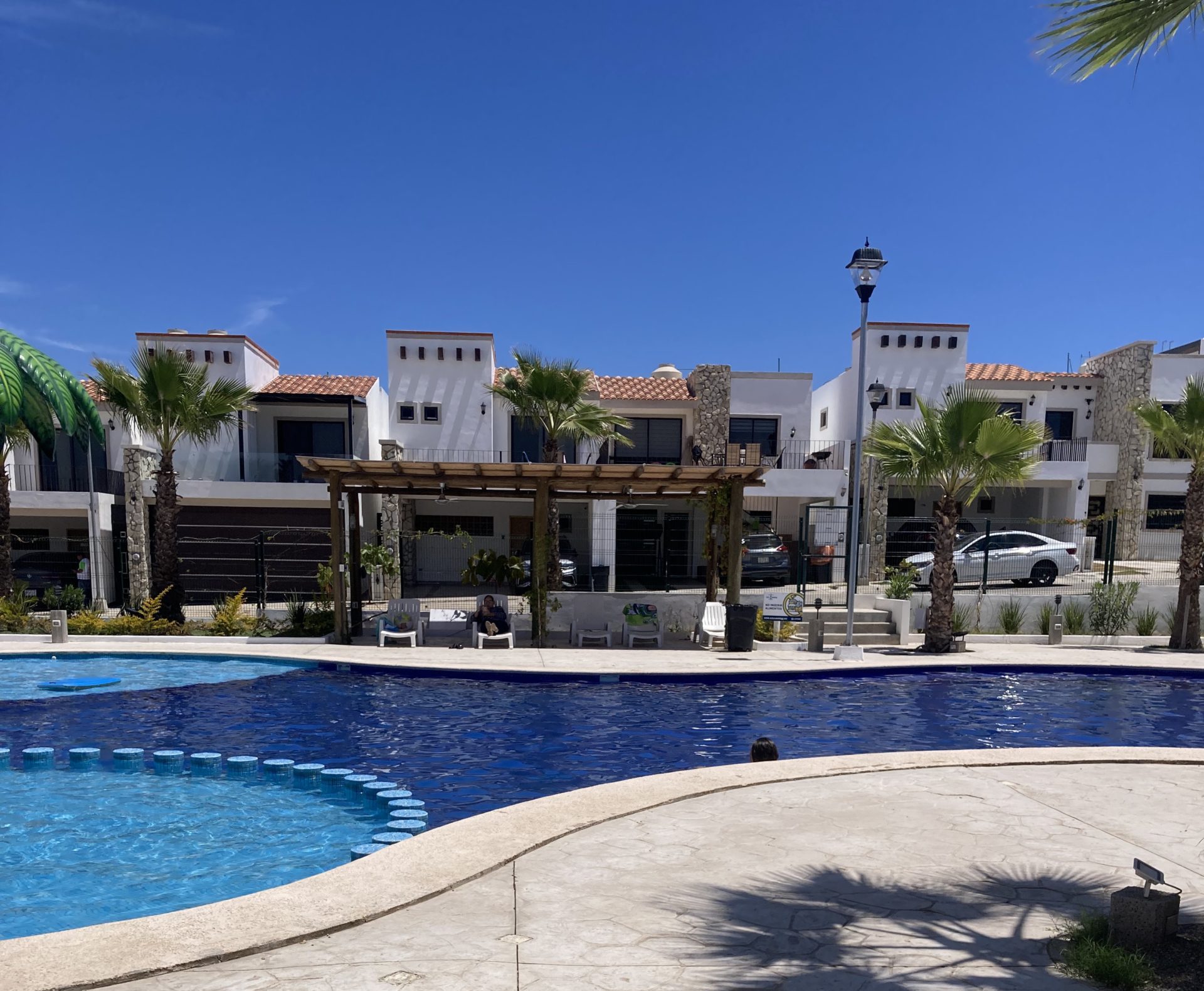
“It is fulfilled, what they have come to market for…. They have had their moment of contact and centripetal flow…. Everything is meant to disappear.… Only that which is utterly intangible, matters. The contact, the spark of exchange…. Like the evening star, the flashing intermediary… that is seen only at the dividing of the day and night, but then is more wonderful than either.”
— D.H. Lawrence, Mornings in Mexico
Now they have all largely gone. The few that remain take on the semblance of hangers-on, children lost or forgotten nursing their hangovers and wandering—wondering how they’ll spend their remaining pesos. At the pool at the Azul Marina with L. and D., the man tasked with keeping an eye on us guests begins to turn. In indecipherable Spanish—spoken with great rapidity—he admonishes us for coming to his country knowing hardly a lick of the language. “You all come here saying nada, understanding nada. Americanos,” he gestures away with his hands, “a ya.” At least, we want to say, we’ve used what broken words we have to do our best. At least, we want to say, we are friendly and grateful. But we don’t. As much beauty as there is here, reality has its grim reminders. Mexico is the product of a complex and violent history and the convoluted circumstances by which its northern neighbor has in many ways dictated the very terms of its existence; by controlling the rules of play, we have stubbornly dictated the parameters of Mexico’s potential.
I make out a sense of languor and aimlessness in the air. The city—and maybe the continent—is somewhat extinguished following the immense buildup to the eclipse. The dark band that draped us in supplication and ecstasy for all of four minutes, encircled by a smoldering horizon at “sunset” with an ethereal corona overhead, also took something from us. I think we all must suffer today, and maybe even some for days yet from the vulnerability this interstitiality teased out of us. Enter languor. A little death.
In “Market Day,” D.H. Lawrence makes much of collective catharsis, the strange compulsion to unite in order to feel something beyond ourselves, suprapersonal. “That, which is most elusive, still the only treasure… Only that which is utterly intangible matters.” In ritual, humanity is at its most essential as a force subservient to grander forces, some large terrific thrust beyond our reason. We see the force, the centrifugal spin, of the planets as evidence and example of the ferocity intrinsic to Lawrence’s circular interpretation of existence. In the eclipse, we experienced a sort of one plus one equals three that results from encounters with elemental forces. The strange liminal zone between ourselves and the great wonder (or the interminable void) is more meaningful and luminous than our inadequate selves and the incommunicable other. There is something greater beyond our bodies we yearn to touch.
It is a lazy, contemplative day. Pool. Food. Beach. Tomorrow, back to the city for the final day. Thursday morning, aeropuerto. For now we will continue to eat and drink, and drink and eat. I kiss my wife and hold her hand as the waves break and the sun, full-force, commands the sky. “We both step and do not step into the same rivers, we both are and are not.”




